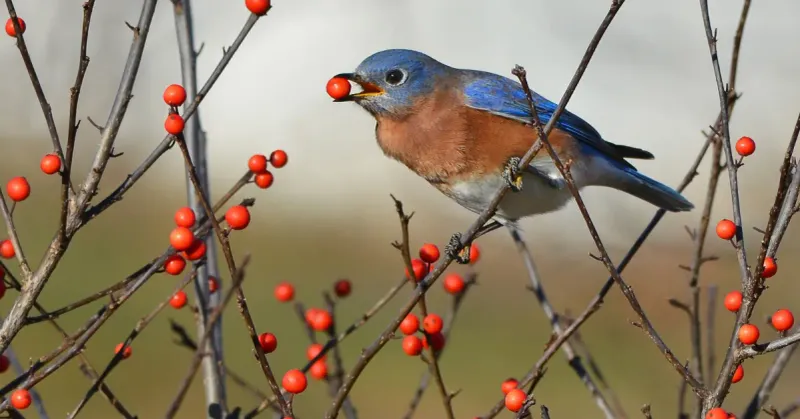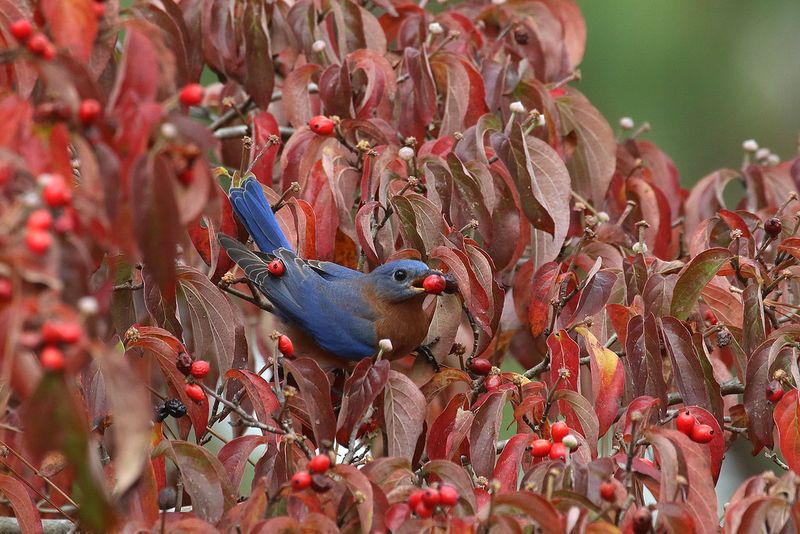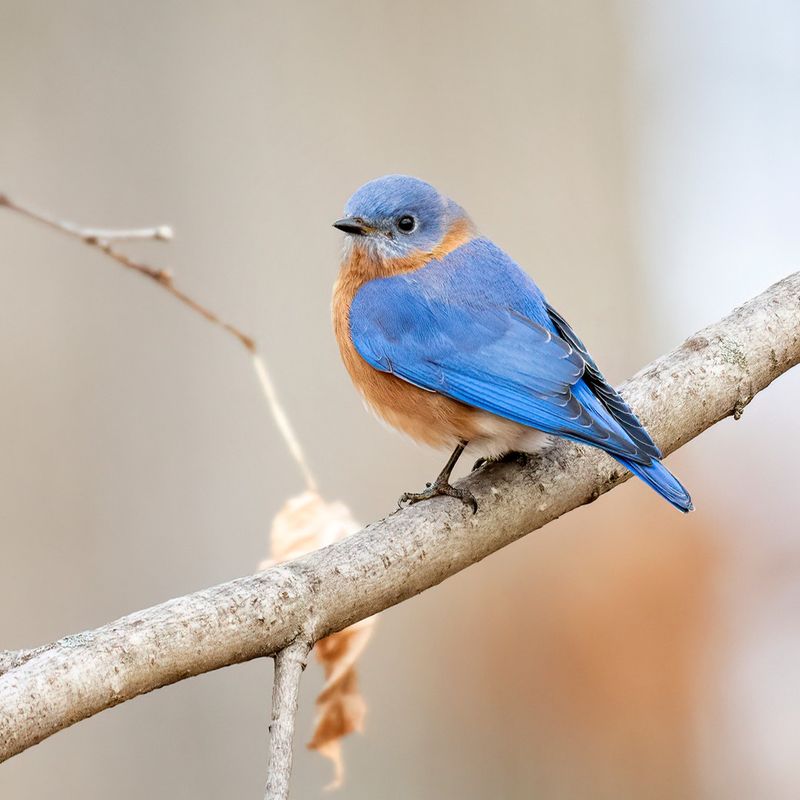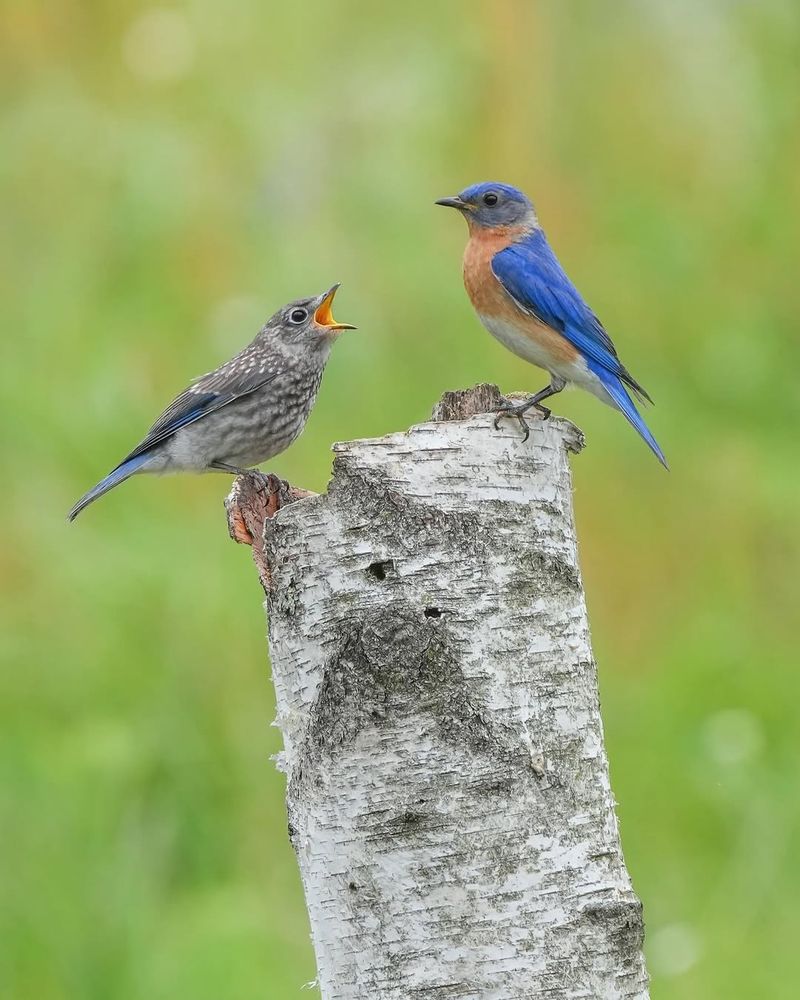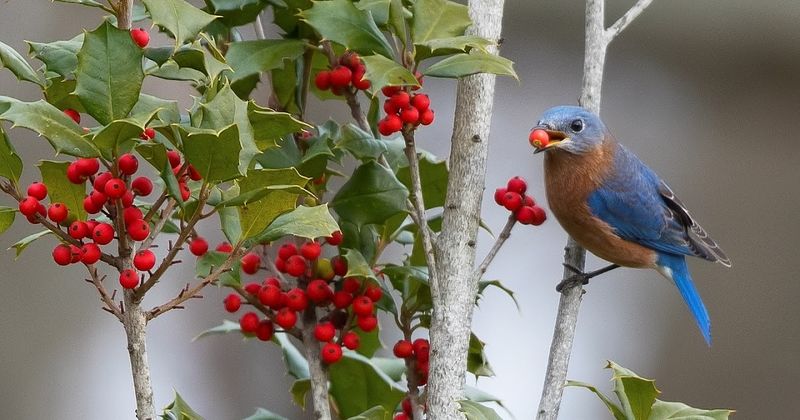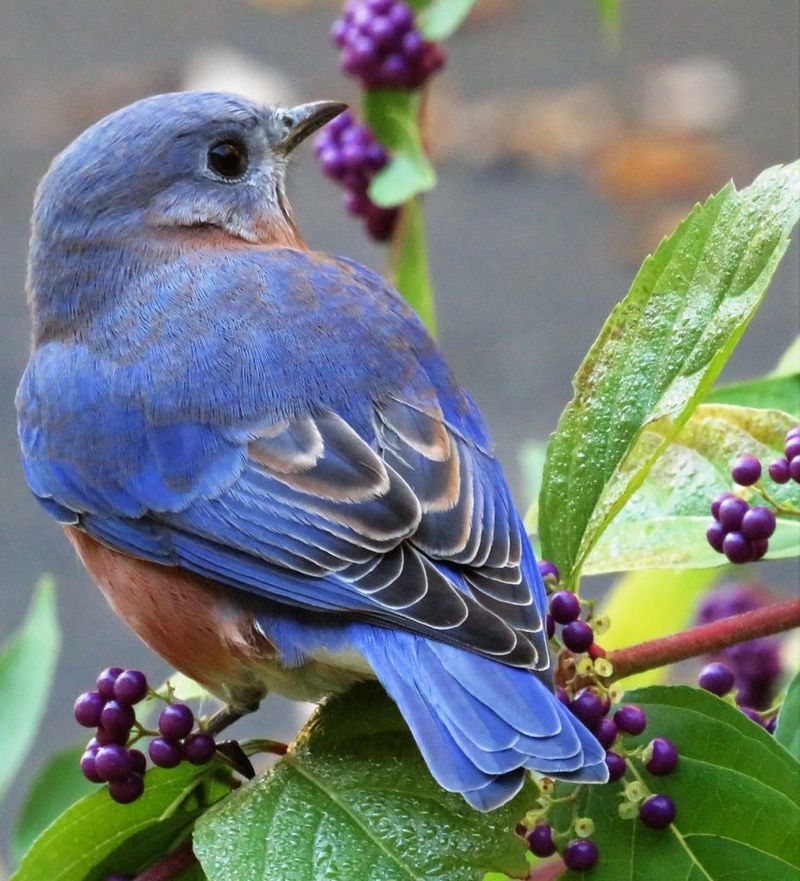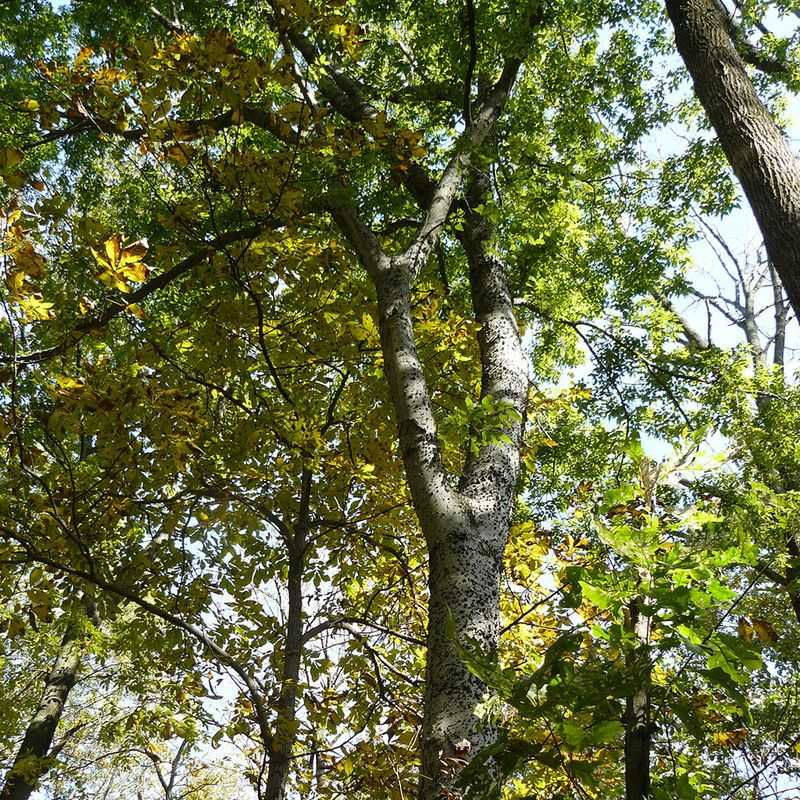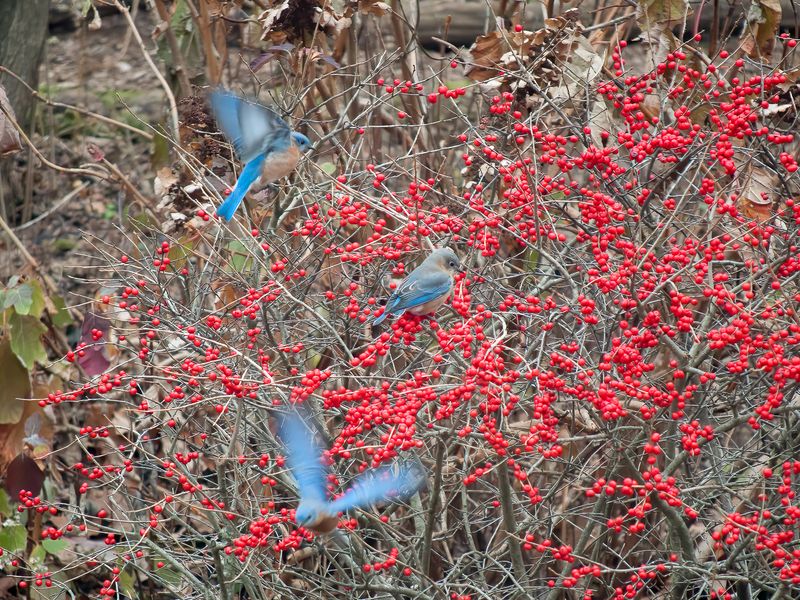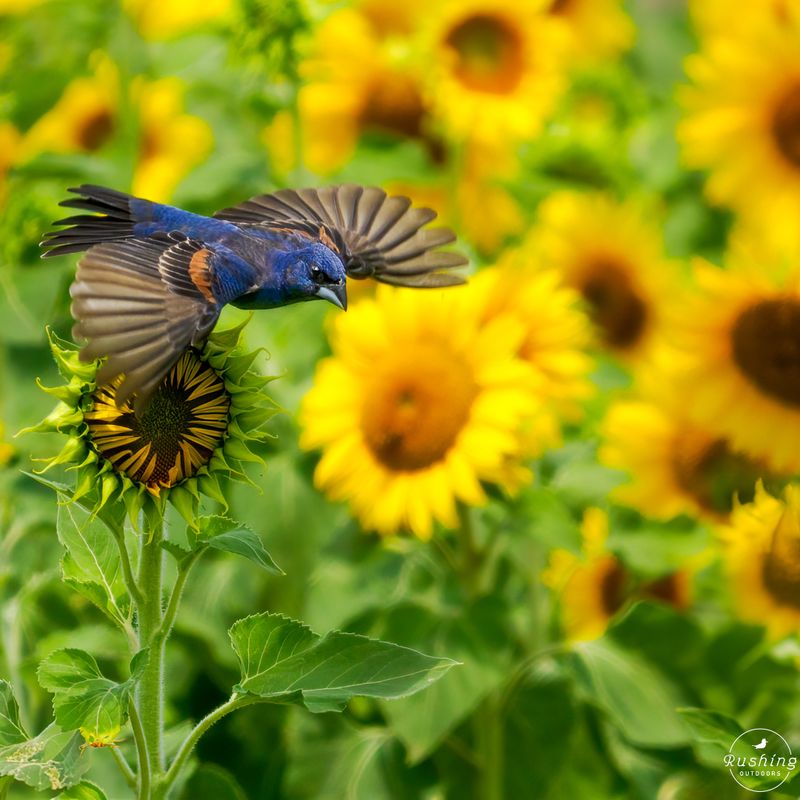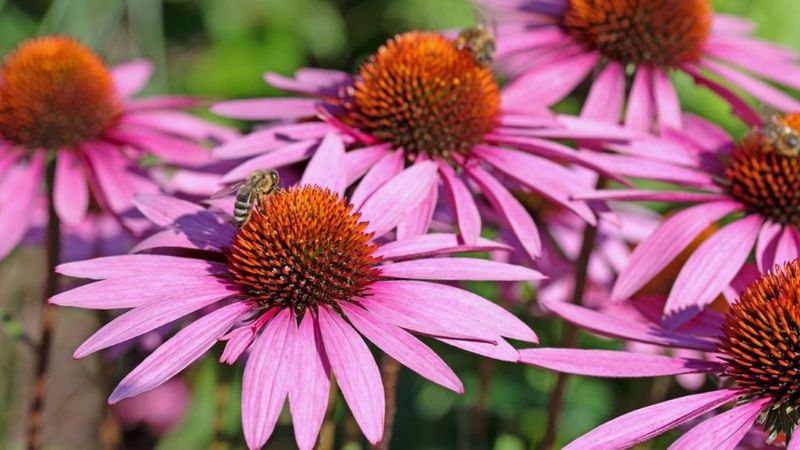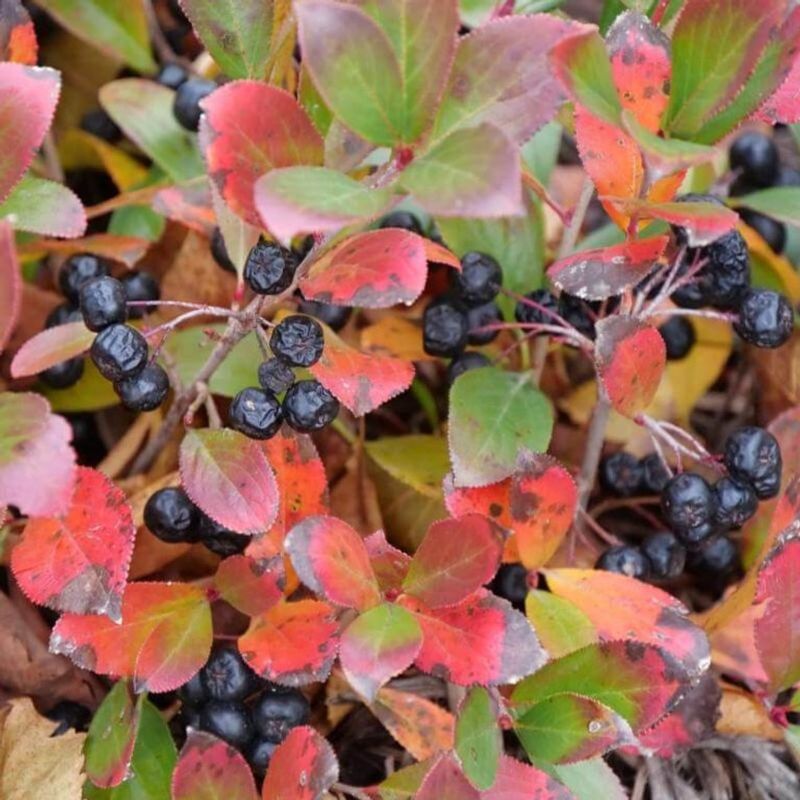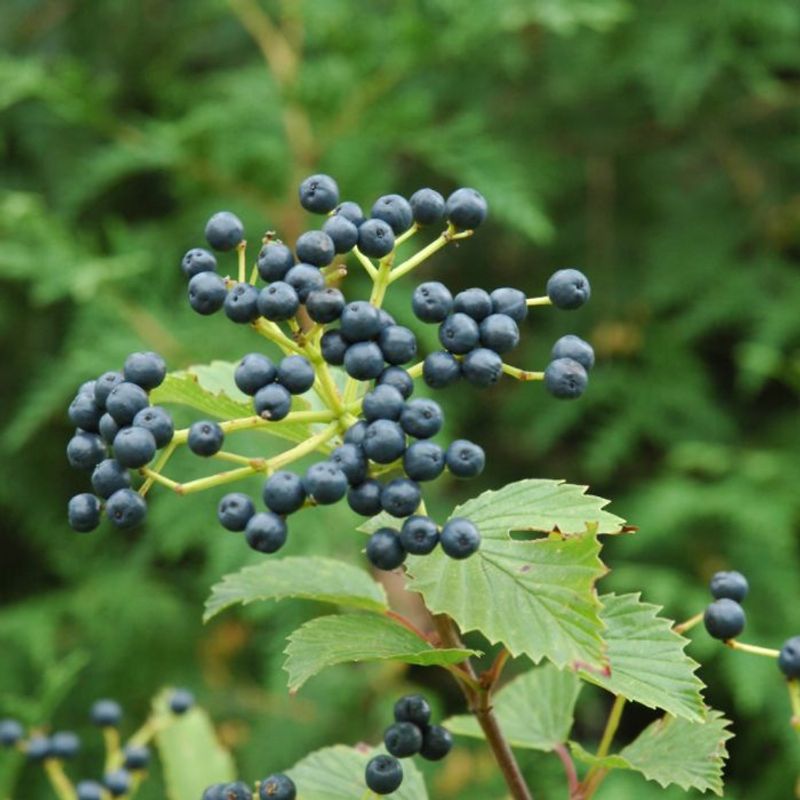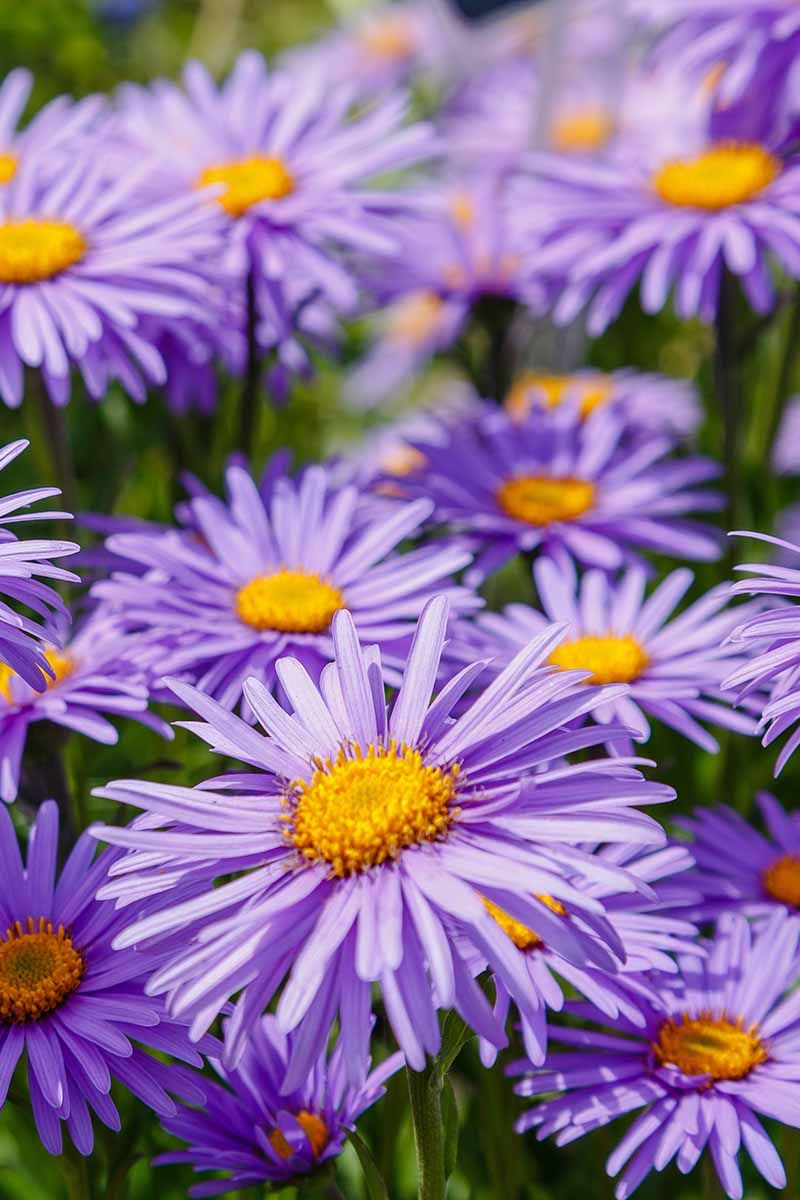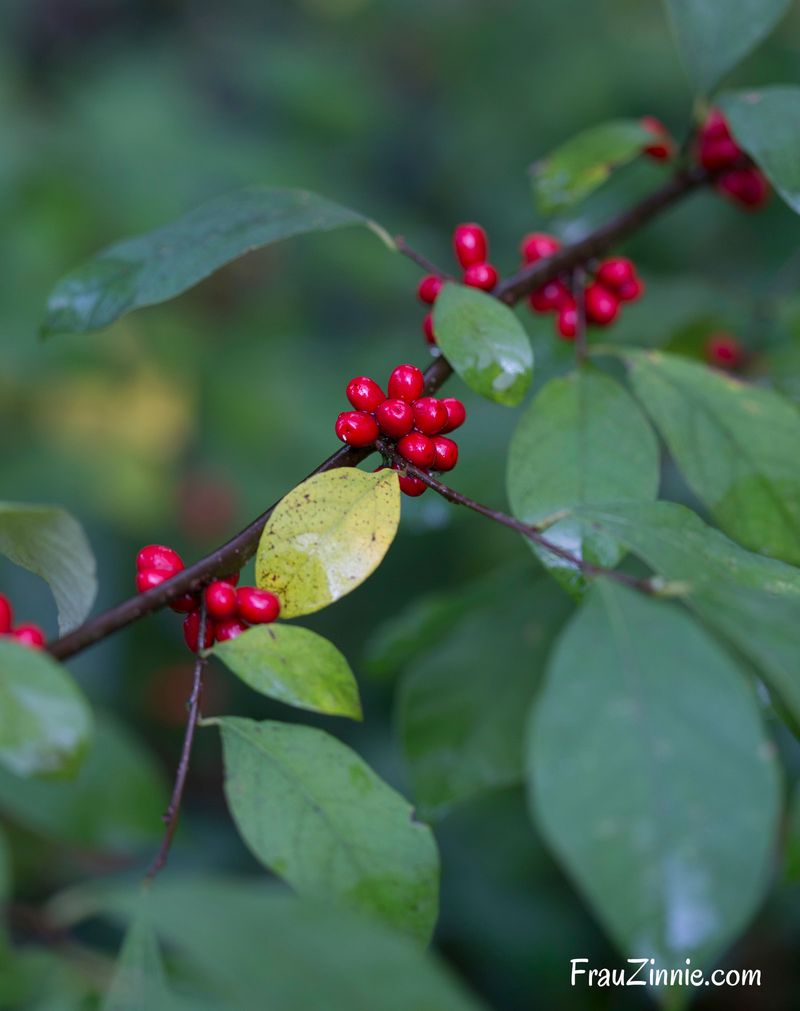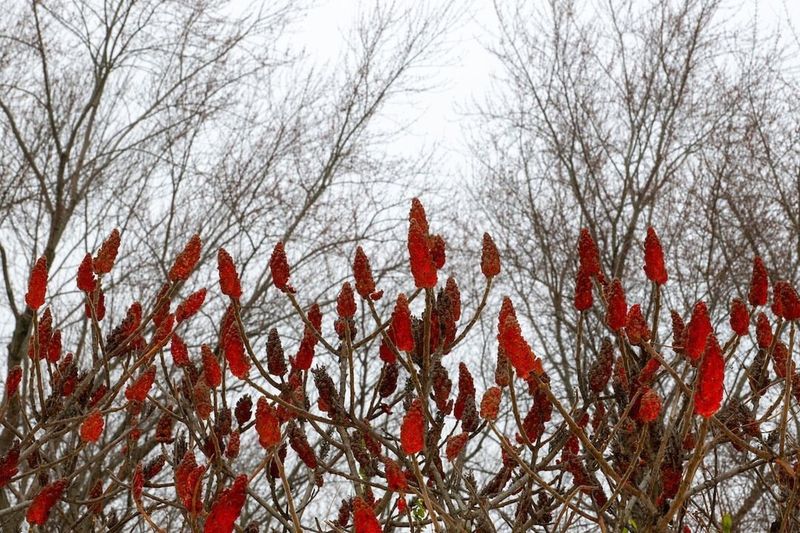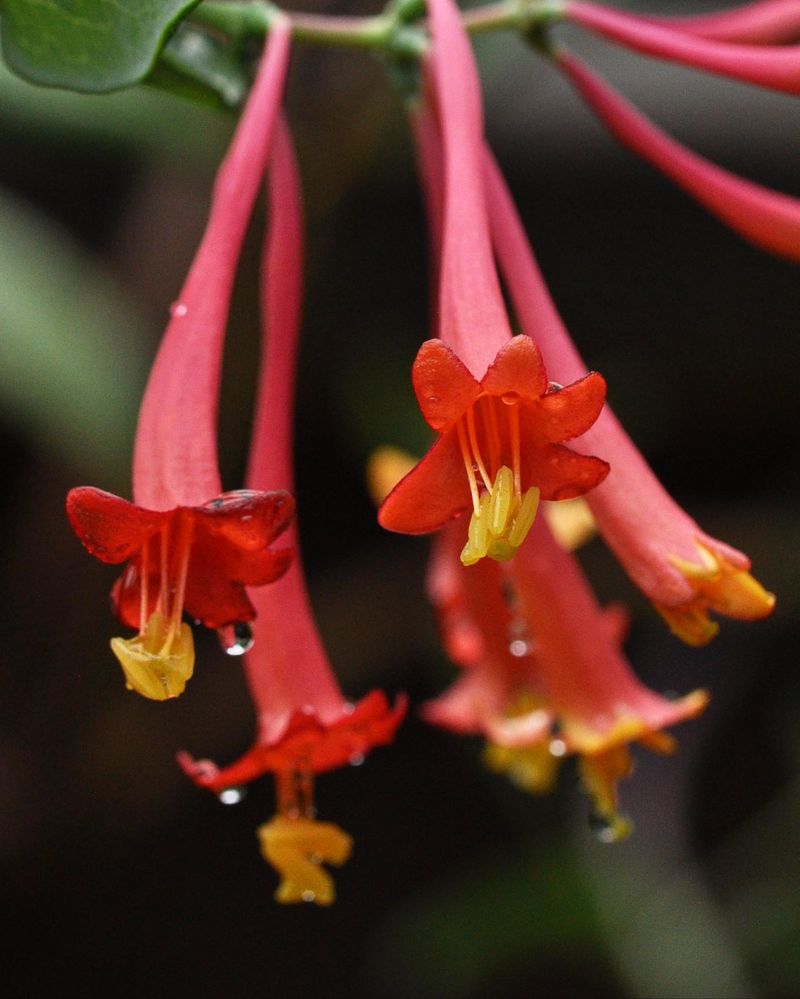Want to bring a splash of sky-blue beauty to your backyard? Plant the right flowers, berries, and shrubs, and bluebirds will come calling.
These 19 plants are like an open invitation—offering the food, shelter, and charm that keep these feathered gems fluttering around your garden all season long.
1. Elderberry Bushes
Elderberry bushes produce clusters of small dark berries that bluebirds absolutely adore. The fruits ripen in late summer, providing a perfect food source when bluebirds are fattening up for migration or winter. Beyond berries, these bushes offer excellent nesting spots and protection from predators.
The dense branches create safe havens where bluebirds can rest and hide from hawks or other threats. Plant elderberries in a sunny spot with well-drained soil. They’re hardy in most climates and require minimal maintenance once established.
2. Dogwood Trees
Flowering dogwoods deliver a double benefit for bluebird enthusiasts. Their spring blossoms attract insects that bluebirds hunt, while their red berries become a vital food source in fall and early winter. Many gardeners appreciate dogwoods for their stunning four-season interest.
The beautiful spring flowers, summer greenery, fall berries, and interesting winter bark structure make them landscape favorites. Dogwoods thrive in partial shade and prefer acidic, well-drained soil.
They grow relatively slowly but eventually reach 15-30 feet tall depending on the variety.
3. Eastern Red Cedar
Eastern red cedars serve as natural buffet tables for hungry bluebirds. The small blue berries produced by female trees remain available throughout winter when other food sources become scarce.
Beyond food, these evergreen trees provide crucial shelter during harsh weather. Bluebirds often huddle within the dense foliage to escape winter winds, snow, and rain.
Red cedars grow in nearly any soil condition and require little maintenance. Their pyramid shape adds year-round structure to your landscape while supporting wildlife.
4. Serviceberry Trees
Serviceberry trees burst with delicious berries that ripen to a deep purple-blue in early summer. Bluebirds compete with other wildlife for these sweet fruits, which resemble small blueberries in appearance and taste.
The multi-stemmed growth habit provides perfect perching spots for bluebirds scanning for insects. You’ll often spot them sitting atop branches before diving down to catch beetles or caterpillars.
Also known as Juneberry or Shadbush, these native trees produce stunning white spring flowers before the berries appear. They grow well in most soil types and reach 15-25 feet tall.
5. Holly Shrubs
Holly shrubs stand out in winter landscapes with their glossy evergreen leaves and bright red berries. Female holly plants produce abundant fruits that persist through winter, offering bluebirds emergency food during snowstorms.
The dense growth pattern creates protected spots where bluebirds can escape predators. Many gardeners plant holly near bird feeders or houses to provide this natural security barrier. Remember that you’ll need both male and female holly plants to get berries.
Place them within 50 feet of each other to ensure proper pollination and maximum fruit production.
6. Virginia Creeper
Virginia creeper vines produce clusters of dark blue berries that ripen in late summer. These fruits aren’t particularly appealing to humans but rank high on bluebirds’ preferred menu.
The climbing nature of this plant creates vertical habitat diversity in your yard. Bluebirds appreciate different heights for perching, nesting, and hunting insects that gather on the vine’s leaves.
Despite its aggressive growth habit, Virginia creeper offers spectacular fall color when its leaves turn brilliant crimson. Plant it where it can climb trees, fences, or walls without overtaking more delicate plants.
7. Beautyberry Shrubs
Beautyberry shrubs produce clusters of vibrant purple berries that look almost artificial in their brightness. These eye-catching fruits ripen in fall and often persist into early winter, becoming important food sources as other options disappear.
The arching branches form natural perches where bluebirds can rest while scanning for insects. You might spot them sitting briefly before swooping down to catch grasshoppers or beetles in your lawn. Beautyberries prefer partial shade but adapt to full sun.
They’re remarkably drought-tolerant once established and require minimal care beyond occasional pruning to maintain their graceful form.
8. Hackberry Trees
Hackberry trees produce small orange-red berries that bluebirds consume throughout fall and winter. These fruits have a high sugar content that provides quick energy during cold weather.
The rough, corky bark of hackberry trees harbors numerous insects that bluebirds hunt during breeding season. Parents gathering food for nestlings will visit these trees repeatedly to find protein-rich bugs. Hardy and adaptable, hackberries tolerate urban pollution, drought, and poor soil conditions.
They grow relatively quickly and can reach 40-60 feet tall, providing shade along with wildlife benefits.
9. Winterberry Holly
Winterberry holly loses its leaves in fall, leaving behind stems covered with brilliant red berries. This deciduous holly creates a spectacular winter display while providing essential nutrition for bluebirds during the leanest months.
Unlike its evergreen cousins, winterberry tolerates wet soils and even thrives in boggy areas where other shrubs struggle. The berries persist until late winter when food scarcity peaks. Plant several female winterberries with at least one male pollinator nearby.
The contrast between the bright berries and winter snow creates stunning landscape interest while supporting your backyard bluebirds.
10. Native Sunflowers
Native sunflowers attract a buffet of insects that bluebirds eagerly hunt. The tall stalks provide perfect perching spots for bluebirds as they scan the garden for movement below. After flowering, the seed heads become feeding stations for many birds.
While bluebirds don’t eat the seeds directly, they’ll hunt the smaller seed-eating birds that gather there, creating a complete backyard ecosystem. Choose perennial varieties like Maximilian sunflower for lasting impact.
These natives require little care, resist disease, and return year after year, making them ideal low-maintenance additions to bluebird habitats.
11. Coneflowers (Echinacea)
Coneflowers serve as insect magnets all summer long, attracting the beetles, bees, and flies that bluebirds love to eat. Their distinctive raised centers create landing pads for pollinators that become bluebird snacks.
The seedheads remain standing through winter, continuing to attract insects even after frost. Bluebirds will visit these dormant flowers regularly to hunt for hibernating bugs hidden in the dried structures.
Purple coneflowers are the most common, but newer varieties come in white, yellow, orange, and red. Plant a mix of colors for visual interest and extended blooming periods to support bluebirds longer.
12. Black Chokeberry
Black chokeberry shrubs produce abundant dark fruits that persist well into winter. Though too astringent for human consumption without processing, these berries become more palatable to bluebirds after freeze-thaw cycles soften them.
White spring flowers attract insects that bluebirds hunt during nesting season. Later, the brilliant red fall foliage adds landscape interest while the berries begin to ripen. Chokeberries thrive in average garden conditions and resist most pests and diseases.
Their compact size (3-6 feet tall) makes them perfect for smaller yards where space is limited but wildlife is welcome.
13. Viburnums
Viburnums encompass numerous species that produce berries ranging from red to blue-black. This diverse group offers something for bluebirds nearly year-round, with different varieties fruiting from summer through winter.
Beyond berries, viburnums feature fragrant spring flowers that attract insects for bluebirds to eat. The multi-layered branches provide excellent nesting sites and shelter from predators. American cranberrybush viburnum and arrowwood viburnum rank among the best for bluebirds.
Both produce abundant fruits and adapt well to various garden conditions from partial shade to full sun.
14. Native Asters
Native asters burst with small daisy-like flowers in late summer and fall when many other plants have finished blooming. Their timely appearance creates insect-hunting grounds for bluebirds preparing for migration or winter.
The star-shaped flowers in purple, blue, and white attract numerous butterflies and bees. Bluebirds perch nearby, waiting to snatch insects that visit these nectar-rich blooms.
New England aster and aromatic aster work particularly well for bluebird gardens. Both grow in average soil, resist deer browsing, and provide weeks of color and insect activity.
15. Blueberries
Blueberry bushes create the perfect partnership with their avian namesakes. The sweet fruits ripen throughout summer, providing food for both humans and birds if you’re willing to share your harvest.
Lowbush varieties create excellent groundcover while highbush types form natural privacy screens. Both attract insects during flowering and fruiting periods, offering bluebirds hunting opportunities alongside berry feasts.
Plant several different varieties to extend the fruiting season from early summer through fall. Blueberries prefer acidic soil and regular moisture but reward your efforts with years of productivity.
16. Joe-Pye Weed
Joe-Pye weed towers over most garden plants, reaching 5-7 feet tall with majestic pink-purple flower clusters. These impressive blooms become insect highways in late summer, attracting butterflies, bees, and flies that bluebirds hunt.
The hollow stems harbor overwintering insects that provide critical protein for early spring bluebirds. Leave the stalks standing through winter to maximize this benefit.
Despite its name, Joe-Pye isn’t a weed but a valuable native plant. It grows best in moist areas with full sun to partial shade and creates dramatic backdrops for smaller garden plants.
17. Spicebush
Spicebush earns its name from the spicy fragrance released when leaves or twigs are crushed. This native shrub produces small red berries in late summer that bluebirds consume eagerly before migration.
Yellow flowers appear in early spring before the leaves emerge, attracting early-season insects when bluebirds are establishing territories and beginning nest construction. The early bloom time makes it especially valuable.
Spicebush grows naturally as an understory plant in woodland edges. It thrives in partial shade and moist soil, reaching 6-12 feet tall and wide when mature.
18. Staghorn Sumac
Staghorn sumac forms colonies of small trees with distinctive fuzzy branches resembling deer antlers. The crimson berry clusters remain available throughout winter, becoming increasingly important food sources as other options disappear.
The open growth habit creates perfect hunting perches for bluebirds. They’ll sit atop branches scanning the ground below for insect movement before swooping down to capture prey. Though sometimes considered weedy, sumacs offer tremendous wildlife value.
Their brilliant red fall color and architectural winter presence make them worth considering for larger yards where their spreading nature won’t become problematic.
19. Trumpet Honeysuckle
Trumpet honeysuckle produces tubular red flowers that attract hummingbirds and insects alike. Unlike its invasive Japanese cousin, this native vine behaves well in gardens while creating insect-hunting opportunities for bluebirds.
Red berries follow the flowers, providing additional food sources in late summer and fall. Bluebirds will visit the vines repeatedly to check for both insects and berries. Train this climber on trellises, fences, or arbors where its showy flowers can be appreciated.
The semi-evergreen foliage in mild climates offers year-round interest alongside its wildlife benefits.


